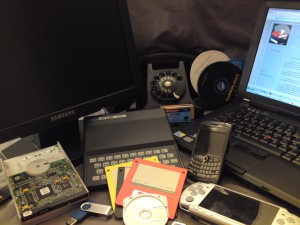Google Ink
My father was a plastic surgeon, who on the occasional Sunday evening, brought his work home. We would gather around the living room, popcorn in tow, and watch a slide show of his latest and most interesting cases. There are two instances, which I remember to this very day:
The first involved a man, who while water skiing in Lake Erie, fell off his skies. The boat that was pulling him, turned around, and accidentally went over him; the boats’ propeller removed half of the skin, on his face. In the photographs, of the man, before his surgery, half of his face looked perfectly normal, while the other half was of just his eye.
The second slide show, which I vividly recall, was of various people who had come to my father to have their tattoos removed. Often, either the skin had wrinkled, to the point that the tattoo was no longer decipherable, the ink had faded, or the sentiment of the tattoo no longer seem relevant and thus they now hoped to have it removed. To be sure that we were engaged, in the slide show, we had to make a guess as to what the tattoo actually was supposed to represent. The entire process left an indelible mark on my mind: I knew I would never want a tattoo, realizing that my body, in twenty years, would look like those in the slide show. Obviously, I have my own personal issues regarding tattoos; but they pale in comparison to what I have recently learned regarding Google’s “next generation tattoo”.
Google’s e- tattoo
As a person who is captivated by technology, I find the wearable ink remarkable. The ECG, EEG/EMG sensors, pictured on left side above, can measure heart, brain, and muscle activity. The temperature sensor and strain gauges can be used to monitor a person’s overall health and exertion level, while photo detectors can indicate if a person should wear sunscreen. The actual wearable device is from a company called MC10; however, Google has developed the application that takes the wearable ink, to another level. Also, notice the wireless communication on the right hand side so that a person can keep in constant communication with the digital world.
Presently, the wearable tattoo is not permanent, but simply is a patch that is applied directly to the skin. However, I do not think that we are far from lasting wearable ink.
Google has taken out a patent, on a wearable electronic tattoo, which will be placed strategically over the user’s throat and will communicate with your cell phone or other mobile communication devices.
It should also be noted that it does not have to be an actually audible sound that an individual hears, but even a motion of the throat muscle can cause the mobile device to be authenticated.
Additionally, the electronic tattoo is able to read your thoughts by recognizing signals to un-vocalized words in your throat and the patent states specifically: “The electronic skin tattoo 200 can further include a galvanic skin response detector to detect skin resistance of a user. It is contemplated that a user that may be nervous or engaging in speaking falsehoods may exhibit different galvanic skin response than a more confident, truth telling individual.”
Yet being able to detect your thoughts is not the most disturbing part of the patent. The patent states in another line: “The throat microphone of electronic skin tattoo 200 can have its own identification and be selectable in a group setting, for example, where multiple users are wearing an electronic skin tattoo 200.” http://tinyurl.com/kf4pvlg
I am wondering if perhaps this is too Connected?












